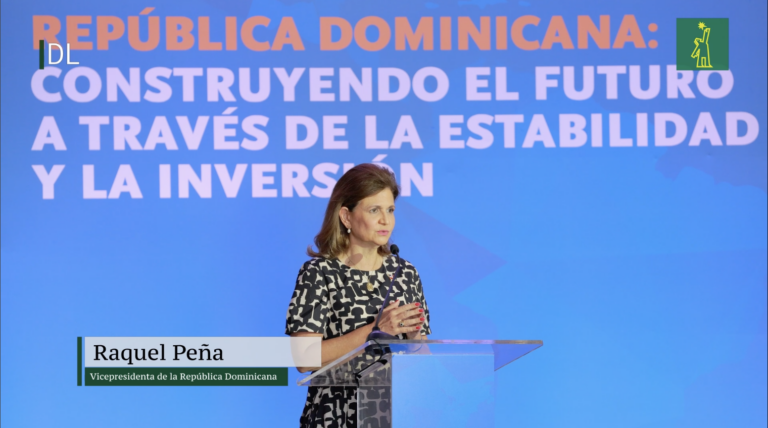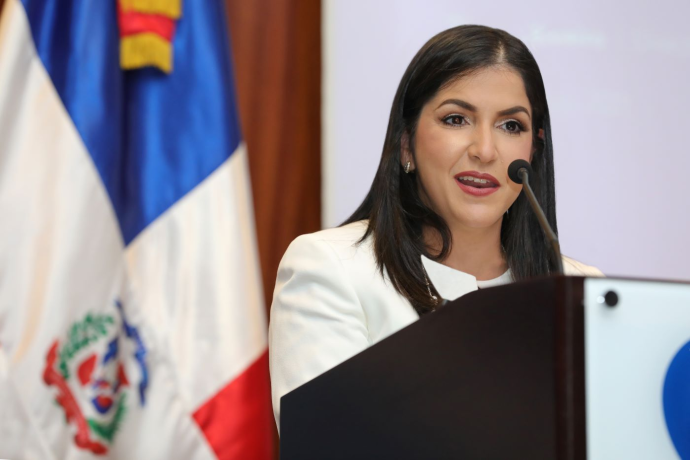The Government took stock of 2023’s economic performance, a year when the fiscal deficit was reduced from 3.2 to 3.1%, thanks to the healthy figures provided by tourism, generating an estimated US$ 10,000 million in foreign currency and free zone export which rose by more than 7,445 million.
In (a recent) edition of La Semanal, President Luis Abinader gathered his economic staff, including Central Bank governor, Héctor Valdez Arbizu, and cited data: per capita income was $11,200.
Inflation, which was one of the main targets, he said, stood at 3.55%.
The government implemented social plans and subsidies for products that increased due to the Russia-Ukraine conflict and for fuels so that it does not affect the population.
In addition, foreign direct investment (FDI) could end up at US$ 4,200 million, for a 5% year-on-year growth, while international reserves stood at US$ 15,457.7 million, Abinader announced to journalists and communicators who attended the National Palace.
In the middle of last year, as a strategy, the government began to relax MPR (Monetary Policy Rate) applied by the Central Bank lowering it from 8.5% to 7.0%.
Poverty stands at 24.4% at the end of 2023, a figure that fell from 28.4%, Abinader said.
Dollar Stability
The Dollar’s exchange rate stability was 3.4%, down from 3.6% in the years before the COVID-19 pandemic.
When questioned about the fluctuation of the dollar rate in “recent months”, during the weekly meeting with the press, the leader replied that “the depreciation has been normal for 3 years and a few months that we have been in office.”
Referring to the state-owned Central Bank, the buying and selling rates for the US Dollar are 58.50 and 58.98 pesos, respectively.
The agency explained that, when Abinader took office, the rates were $58.36 and $58.46 for buying and selling respectively.
Between 2020 to date, the dollar dropped below RD$56.00 per unit.
All those numbers have helped poverty fall by four percentage points, from 28.4% to 24.4%, according to a calculation method used by the Ministry of Economy, Planning and Development.
Rising wages, more jobs, and controlling inflation were the factors that helped alleviate poverty, Abinader said.
He cited that, thanks to “fiscal discipline” “we are a middle-income economy ranked seventh in Latin America.”
Employment and unemployment
Furthermore, according to the president’s data, between September 2022 and September 2023, 222,497 jobs were created to bringing the total number of jobs to 4.85 million.
So, unemployment is 5.4%, “one of the lowest rates in the last 20 years,” said the president.
Exports
Between January and November 2023, exports stood at 11,019 million. Free trade zones contributed 7,445 million, thanks to the installation of new parks, bringing the number of industrial parks to 87 where 820 companies operate.
Tourism
Recently, the government celebrated the arrival of 10 million visitors in a sector that contributed US$ 10,000 million in foreign currency plus jobs, according to the data related by President Abinader
While tourism in the world decreased by -13.1%, in 2023, tourism in the Dominican Republic rose by 22%, above the growth in 2019.
Good marks
Good economic management led international rating agencies to acknowledge the country: Standard & Poor’s raised the risk rating from BB- to BB; in 2023, Moody’s placed it from stable BA3 to positive BA3, while that same year, Fitch Ratings upgraded it from BB- to BB+.
Unanswered Questions
With the good economic figures seen at the moment, will borrowing stop? What will happen with the tax reform recommended by international organizations to the Dominican Republic? These were some of the questions from the journalists covering the National Palace had, but they went unanswered. The event was attended by Ministers Víctor Bisonó, Jochi Vicente, Pavel Isa, Joel Santos, Viviana Rivero and José Ignacio Paliza, among others.
Source:




